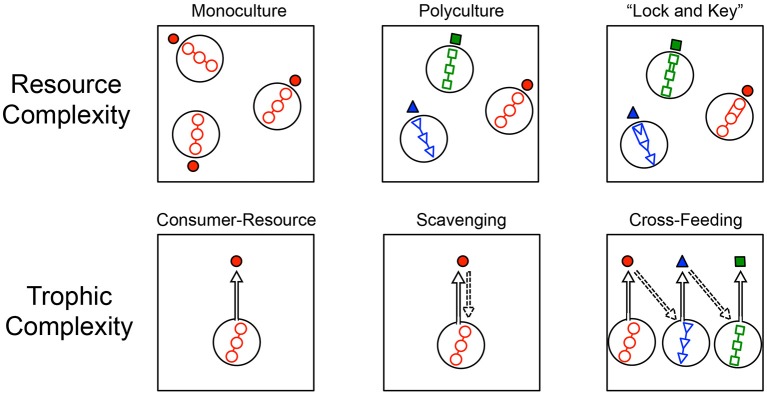Figure 2.
Conceptual diagram depicting aspects of resource complexity and trophic complexity simulated in individual based models (IBMs). Resource complexity (top row) was simulated in three ways. (Left) All resources supplied from outside the system to an individual microbe (solid red circle) were of the same type (open red circles), resulting in monoculture conditions. (Center) All resources supplied from outside the system to microbial taxa (solid red circles, solid blue triangles, solid green squares) were of three different types (open blue triangles, open green squares, open red circles) supplied in equal proportions and resulting in a polyculture. (Right) Resources required energetically costly efforts to breakdown and use, much like an enzymatic “lock-and-key” in the breakdown of complex macromolecules. Models were defined by either monoculture or polyculture resource conditions, and also had either “lock-and-key” resource complexity or simple resources that were immediately assimilated without an energetic cost. Trophic complexity (bottom row) was also simulated in three ways. (Left) A consumer-resource condition where all species belonged to the same trophic level and where individuals only consumed externally supplied resources. (Center) A scavenging condition where the remains of dead individuals were consumed by any other individual in the system that was in close enough physical proximity. (Right) A cross-feeding condition where individuals produced metabolites or by-products that were then consumed by individuals belonging to another taxon. In the modeling, cross-feeding could emerge as a one-way relationship (pictured) or as a two-way relationship.

